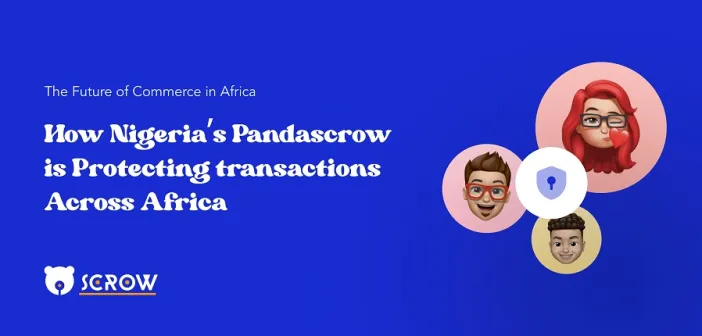How to Put an Actionable Data Ethics Framework in Place

Did you know that your company’s data privacy practices can be a differentiator in the marketplace? Typically, competitive differentiators revolve around the level of service you provide, the quality of your products, or even the price point for your solutions.
However, regardless of industry, if you participate in the personal data ecosystem, how you handle that data can literally make or break your business, which means it can also help set you apart from competitors.
Consumers today are distrustful of how companies use their data and will only share personal information for important transactions, such as those in the healthcare or financial services industries.
However, gaining consumers’ trust often goes hand in hand with gaining their business: 87 percent of US consumers polled said they would not do business with a company if they were concerned about its privacy practices.
In the midst of this lack of trust, companies such as Google and Apple are taking proactive measures to position themselves favorably with consumers: Third-party cookies being phased out, as well as the release of iOS 15, are two stark examples of this.
Determine how customers want their data to be handled
A data ethics framework is a set of guiding principles for your company’s data collection, storage, use, and deletion. This framework will differ for each individual company depending on the industry it operates in and the customers it serves, but at its most basic level, it must include what you believe and how you act.
The first step in developing this framework is determining what your customers and data subjects expect in terms of how their data should be handled. This is referred to as the Platinum Rule: treating people’s data in the manner in which they would like it to be treated.
What permissions have they given? Is there anything missing in your communication about how their data is used? Do you have processes in place for not only collecting data ethically, but also deleting it?
Evaluate your privacy policies and the experience consumers have with them (i.e., whether they are easy to understand) to understand how consumers want their data treated at a granular level.
Engage the services of a chief data ethics officer
Hiring a chief data ethics officer (CDEO) to oversee the development of a data ethics framework is also an important step. Unlike a chief data officer, who must manage data and derive business value from it, the CDEO is primarily responsible for ensuring that all employees and partners use data ethically.
By devoting a member of the executive team to this specific task, your company demonstrates that it is not simply talking about data ethics because it is the right thing to do — it is making an investment to ensure data ethics are upheld.
The CDEO’s mandate will include developing the data ethics framework, but it should not be left to them alone; your entire executive team, including the CEO, CISO, CMO, head of product and engineering, and chief data scientists, must be involved.
Each of these stakeholders plays a role in the data ecosystem and must be involved in the development of data ethics principles to ensure buy-in from all parts of the organization. Privacy practices are a core concern for each of these players; now, they must also be concerned with data ethics.
Examine your company’s data practices
When the team that will contribute to the development of your organization’s data ethics framework has been assembled, it’s time to get a granular understanding of your data inventory process: what you collect, how you collect it, and where you store it.
From a legal standpoint, your company should already understand this technical understanding of what you do with data. Ensure that all stakeholders understand and agree on the process.
If processes must be altered, now is the time to do so. For example, if you review your privacy policies and discover that they are too long, difficult to understand, or that users simply click through without reading the information, you may need to redesign how you present privacy consent forms.
Consider a layered approach that uses colloquial language and visuals to organize the information in a more digestible way, rather than sharing a large block of text filled with legal jargon. By presenting this information to users in an understandable manner, your company will be on its way to operating more ethically.
Implement your data ethics framework
Now is the time for your executive team to agree on how your company should operate and, on a philosophical level, what you want it to become or do — this will serve as the foundation of your framework.
By publishing data ethics principles, you should outline specific actions your company takes today to uphold ethical data practices. But keep in mind that the data landscape is constantly changing, so your data ethics framework should be as well. It is critical to develop a set of guiding principles that can be revised and refined over time.
For your framework to be effective, these principles must be communicated to all internal and external stakeholders. Make prospective job applicants aware of your data ethics principles through the job description or other means, so that they understand how important ethical practices are before they even start working for your company.
When candidates are hired, make sure data ethics discussions are part of the onboarding process. Make data ethics a foundational matter of employee conduct by providing ongoing training at the company and departmental levels. It is not sufficient to simply make the principles available for reading; every employee, from the CEO to interns, must be held accountable for ethical data practices.
These practices should also be known to your partners, suppliers, data processors, and customers. By including ethical data management in any business discussion, you can set expectations and ensure your company aligns with other industry players who operate ethically. And when data ethics principles are easily accessible to any customer or partner, you’ll be operating in a transparent manner, demonstrating that nothing nefarious is going on behind the scenes.
Don’t put it off any longer
It is never too late to create and implement a data ethics framework, but the best step a company can take is to implement this framework from the start.
This is good news for early-stage startups because it can be difficult to integrate this framework into business functions that are already in place. It may be more difficult to implement for more established brands, but the sooner you do, the better off your company will be.
Once you’ve established a data ethics framework, remember to constantly assess the accuracy and quality of your data. If you use outdated, incomplete, or inaccurate data, you risk losing customer trust and undermining all of your company’s efforts to operate more ethically.
Businesses can gain trust and set themselves up for long-term success by focusing on continuous improvement and accountability.







